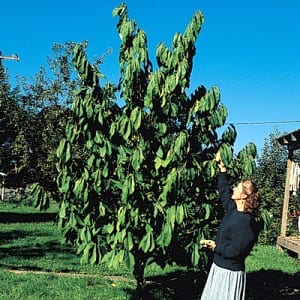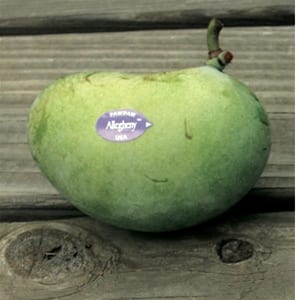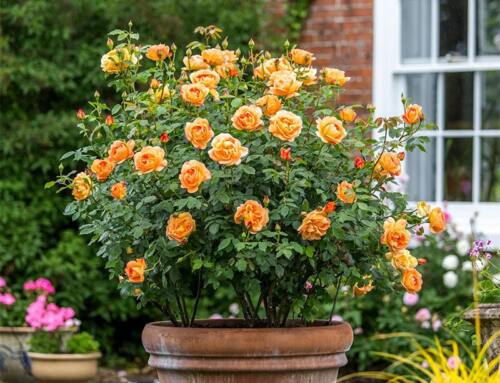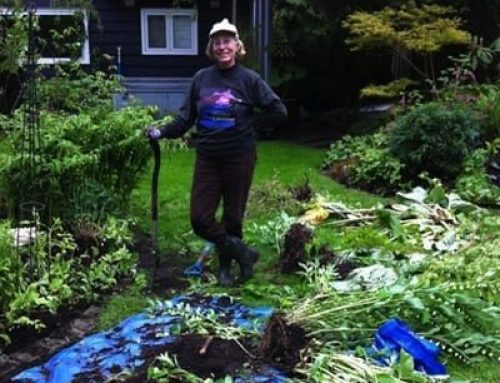Discover and Grow Pawpaws : These hardy trees produce delicious fruit with tropical flavours
Pawpaw (Asimina triloba) is an intriguing eastern North American understorey tree that grows across much of the eastern US and into southern Ontario. It is a member of the Annonaceae (Custard Apple or Soursop Family), a primarily tropical plant family that brings us custard-apples, cherimoyas, sweetsops, soursops, and ylang-ylangs. Only a few members of this family extend into temperate regions, pawpaws being the most significant for temperate gardeners and fruit lovers.
Key Features
Pawpaws are perennial trees. In cultivation they generally grow to about 10-20 feet tall and slightly less wide. They are deciduous with large, subtropical-looking foliage. The flowers are usually deep burgundy or purple and are pollinated by flies and beetles that are attracted to the somewhat fetid odour. Pawpaws are self-infertile so at least two different cultivars will need to be grown to pollinate each other and get fruit on both plants. The fruits, which, can look a bit like a green mango, are ripe when the skin starts to turn brown and the flesh softens. They are sweet with a custardy texture and taste like a unique combination of banana, mango and cantaloupe! They are truly delicious. Pawpaws ripen in late summer and fall.
Historical Significance
Pawpaws were eaten by Indigenous Peoples who ate the fruit fresh or made them into cakes and sauces or dried and stored them as a winter food source. They were also consumed by European settlers. However, large scale cultivation of pawpaws never caught on. This is perhaps because the soft, ripe fruit does not transport well and needs to be eaten or processed fairly quickly when fresh. These days pawpaw fruit is commonly eaten fresh or used to make ice cream, pies, cakes, and other desserts, often substituting for bananas in banana-focused recipes.

Paw paws trees are small to medium in size making them perfect for city gardens. They can also be grown in full sun to part shade.
Fresh pawpaw fruit can often be found at farmer’s markets in the eastern US and at many festivals that celebrate this unique fruit. Beyond the native range of Asimina triloba really the only way to get pawpaw fruit is to grow your own.

Paw paw fruit look a bit like a kidney-shaped mango. Inside the soft flesh offers a blend of delicious tropical flavours.
Cultivation Tips:
Pawpaws are native to rich, moist, shady bottom lands of deciduous forests. They can be grown in full to part sun though young plants often appreciate some shading for the first few years. They are tolerant of a variety of soils as long as they are well-drained with good fertility. They are hardy to zone 5. Pawpaws should be planted close together – 10-30 feet apart – to ensure that pollinating insects can easily travel between plants. Seed grown plants can take 6-7 years to reach blooming and fruiting size though we have often seen flowers on grafted plants that are only 2-3 feet high. That being said, trees will need to reach about 6 or more feet high before they begin producing good crops.
Important breeding work carried out at Kentucky State University and by other experts like Neal Peterson has brought us many notable cultivars with excellent attributes as compared to seed-grown trees such as early-ripening, enhanced fruit flavour and size, greater productivity, and, in some cases, precociousness with good crops even on relatively young plants.
Every year we offer many different cultivars of pawpaw for in-person shopping and mail order shipping across Canada. This fall we are excited to offer 14 different named cultivars. Gardeners in cool summer climates such as the West Coast should consider growing the earlier-ripening varieties in order to get good crops before the season begins to cool.
At Phoenix Perennials, our offerings spans over 5000 different plants available for in-person shopping at our garden centre and plant nursery in Richmond, British Columbia. Additionally, we annually offer more than 2500 different plants for mail-order shipping across Canada. Stay connected with our diverse offerings by signing up for our E-Newsletter and Alerts – your key to staying informed about our mail order and pre-order launches. Happy gardening!




